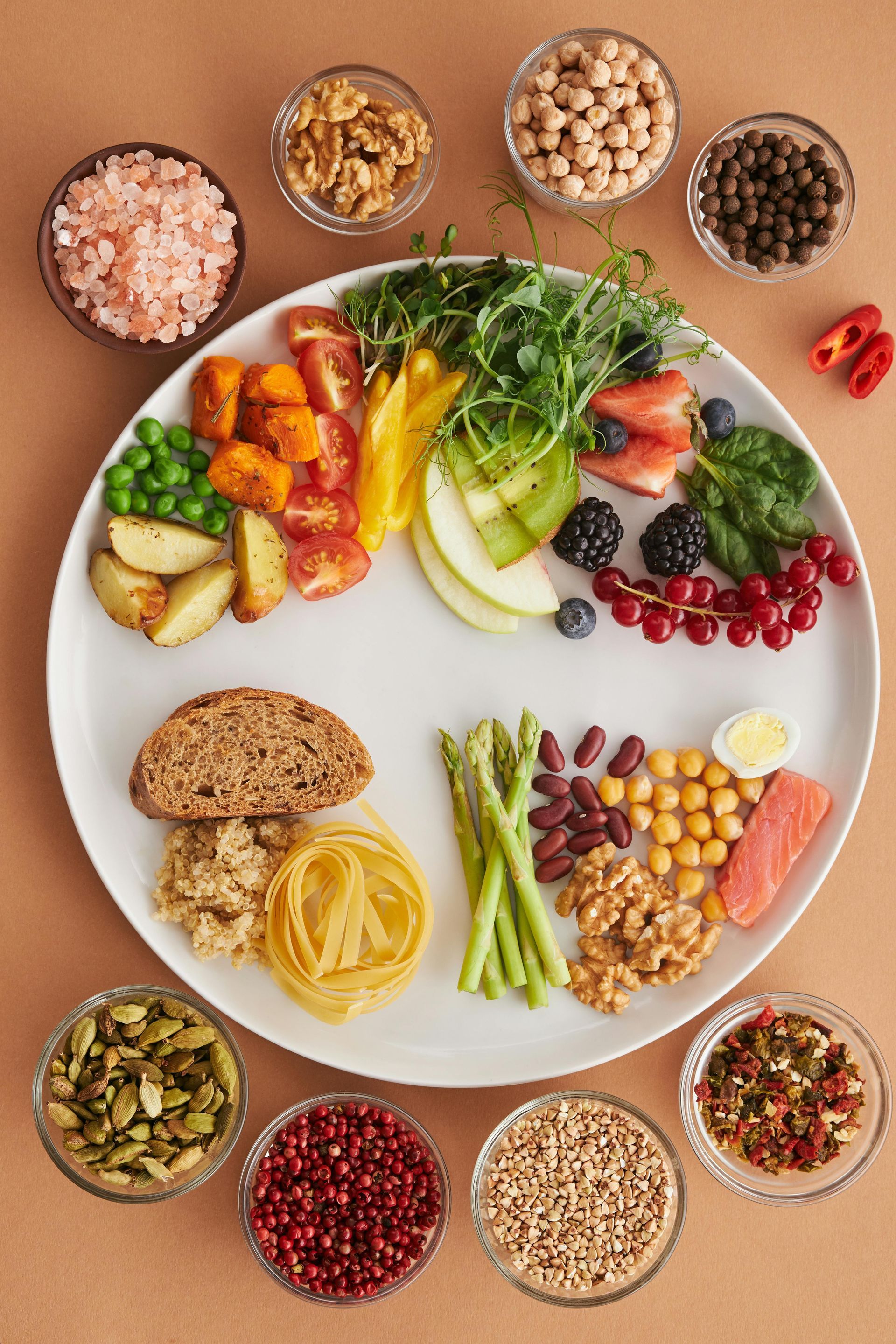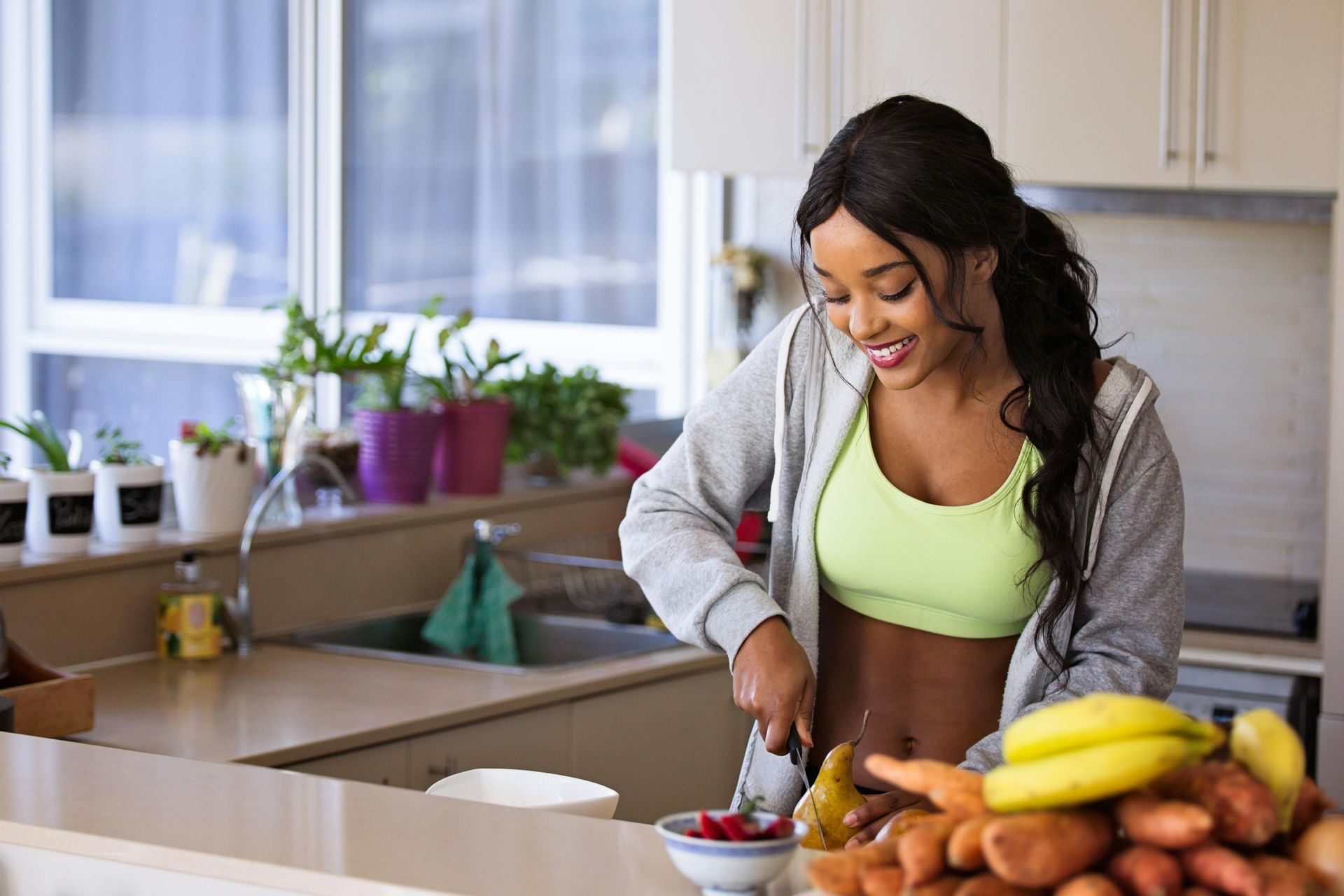How to Become a Vegan: 5 Steps for Beginners
Transitioning to a vegan diet is one of the most transformative changes you can make for your health, the environment, and animal welfare. However, as exciting as it sounds, beginners often have a whirlwind of questions. I’ve been through it myself, and trust me, every step of the journey is worth it. Here, I'll break down everything from what to eat on a vegan diet to handling social situations, plus personal insights to help you thrive.
FUN FACT: What Happens to Your Body When You Become a Vegan?
When I first went vegan, I noticed some immediate changes in my energy levels. Dropping processed meats and dairy for whole plant-based foods made me feel lighter but also more satisfied after meals. Many people report improved digestion, clearer skin, and even better sleep. Over time, a vegan diet can help reduce the risk of chronic diseases like heart disease and diabetes. I also learned that being vegan doesn’t automatically mean being healthy, so it’s important to ensure you’re eating a well-balanced diet.
What to Eat on a Vegan Diet for Beginners
If you’re just starting, keep it simple! Focus on whole foods like:
- Staples: Beans, lentils, chickpeas, tofu, quinoa, and whole grains.
- Veggies & Fruits: Think colorful and seasonal—sweet potatoes, spinach, broccoli, and berries are my favorites.
- Healthy Fats: Avocados, nuts, and seeds.
- Plant-Based Milks: Soy, almond, and oat milk.
When I transitioned to vegan, I started with dishes I already loved, like pasta with marinara sauce or burritos with black beans, rice, and salsa. A lot of non-vegan meals have easy plant-based versions that taste just as good!
Stock Your Pantry with Vegan Staples
Building a vegan pantry is key to making meal prep easy and affordable. Some must-haves include:
- Dried beans, rice, and lentils for budget-friendly meals.
- Canned tomatoes, coconut milk, and vegetable broth for cooking.
- Nutritional yeast for a cheesy flavor (without dairy).
- Frozen veggies for quick additions to meals.
FUN FACT: Can Vegans Eat Chocolate, Cheese, or Bread?
Chocolate: Yes! Look for dark chocolate that’s dairy-free. I always check the label for milk powder or whey. Cheese: Traditional cheese isn’t vegan, but plant-based options like cashew cheese are delicious. Or, you can skip it altogether—I’ve found that dishes like pizza or pasta are still amazing without cheese. Bread: Many types of bread are naturally vegan, but always read the label to watch out for eggs or dairy.
Handling Nutritional Needs
A balanced vegan diet can provide all the nutrients your body needs. Here’s what I focus on:
- Protein: Yes, you’ll get enough! Great sources include tofu, lentils, beans, quinoa, and seitan. A bowl of lentil curry or a chickpea salad is packed with protein and super satisfying.
- Iron: Found in spinach, lentils, and fortified cereals. Pair it with vitamin C (like lemon juice or bell peppers) to boost absorption.
- Calcium: Broccoli, kale, fortified plant-based milk, and tofu are excellent sources.
- Vitamin B12: Since it’s mostly found in animal products, I take a supplement to stay on top of my levels.
At first, I was worried about missing nutrients, so I consulted a dietitian who reassured me that a varied plant-based diet with a B12 supplement was completely sufficient.
Practical Tips for Living as a Vegan
Handling Cravings for Non-Vegan Foods
I’ll admit, I craved cheese a lot in the beginning but experimenting with cashew-based cheese sauces and nutritional yeast helped me find satisfying alternatives. The cravings faded once I discovered how many amazing flavors a plant-based diet offers.
Dining Out and Traveling as a Vegan
Most restaurants these days offer vegan options, but when in doubt, I scan menus for salads, pasta with tomato-based sauces, or veggie stir-fries. Apps like HappyCow make finding vegan-friendly spots even easier.
Social Events and Controversy
Navigating gatherings with limited vegan options can be tricky. I often bring a dish to share (like a quinoa or chickpea salad) or eat beforehand. As for critics, I remind myself that my choices align with my values and lead by example instead of arguing.
Reading Food Labels
Ingredients like casein, whey, or gelatin are common non-vegan additives. Learning to spot these helps avoid surprises at the checkout counter and limit inconvenient returns.
FUN FACT: What Happens When You Go Vegan for 30 Days?
The first month of veganism can be transformative. I experienced better digestion and felt more energized as I incorporated more whole foods into my meals. Many people also report clearer skin and improved mental clarity. Keep in mind, adjusting requires patience especially as you learn new recipes and routines.
Step 5: Building a Supportive Vegan Community
Having a support system can make the transition much easier. I joined local vegan meetups and connected with people online who shared recipes and encouragement. Whether it’s a supportive partner, a friend, or even an online forum, it’s reassuring to know you’re not alone.
Dealing with Non-Vegan Family Members
Not everyone in my circle was on board with my switch to veganism, and that’s okay. I focused on preparing delicious meals that they could enjoy too. Some became supportive and others were still critical. Still OK.
FUN FACT: What Are Good Vegan Snacks?
Snacks were my saving grace when transitioning to Veganism! My go-to favorites:
- Hummus with carrots or crackers
- Roasted chickpeas with spices
- Fresh fruit or a smoothie
- Dark chocolate (check the label for dairy)
FAQs: Is it hard to go vegan?
Not at all! Start by making small swaps, learning new recipes, and taking it one step at a time.
How do I get enough protein on a vegan diet?
Plant-based protein sources include lentils, tofu, tempeh, chickpeas, quinoa, nuts, and seeds.
What are the best vegan dairy substitutes?
Try almond, soy, or oat milk, along with dairy-free cheese, butter, and yogurt.
How can I eat out as a vegan?
Look for vegan-friendly restaurants, customize menu items, and check HappyCow for options.
What are the health benefits of going vegan?
A vegan diet may lower the risk of heart disease, improve digestion, and boost energy levels.
Do I need to take supplements as a vegan?
Vitamin B12 is the most important supplement for vegans. Omega-3 and vitamin D may also be beneficial.
How do I deal with cravings for non-vegan foods?
Find plant-based alternatives! There are vegan versions of almost everything, from cheese to burgers.
What should I do if my family doesn’t support my vegan diet?
Lead by example, prepare delicious vegan meals, and stay confident in your decision.
How do I transition to a vegan diet without feeling overwhelmed?
Start slow, make one change at a time, and focus on foods you already enjoy.
Where can I find easy vegan recipes?
Check out blogs like The Busy Vegan’s Blog for quick and delicious meal ideas!
What Happens to Your Body When You Become Vegan?
- Increased Energy & Digestion Improvement: Whole plant-based foods are rich in fiber, which can improve digestion and regulate blood sugar levels.
- Detox Phase: Some people experience temporary fatigue or bloating as their gut microbiome adjusts.
- Weight Loss or Gain: Many experience weight loss due to reduced calorie-dense animal products, but weight gain is possible if consuming high-fat plant foods.
- Improved Heart Health: A vegan diet is often lower in saturated fat and cholesterol, reducing the risk of heart disease.
- Possible Nutrient Deficiencies: You may need to supplement vitamin B12, iron, omega-3s, and vitamin D, as they are less prevalent in plant-based diets.
- Better Skin & Reduced Inflammation: A plant-based diet rich in antioxidants can lead to clearer skin and reduced joint pain.
How to Become 100% Vegan
- Educate Yourself – Learn about plant-based nutrition and vegan-friendly foods.
- Transition Gradually – Swap animal products for plant-based alternatives.
- Read Labels – Watch for hidden animal ingredients in packaged foods.
- Veganize Your Favorites – Find plant-based substitutes for your go-to meals.
- Stock Up on Staples – Keep grains, legumes, nuts, and dairy alternatives on hand.
- Ditch Non-Food Animal Products – Choose cruelty-free beauty and fashion.
- Plan for Social Situations – Research vegan options when dining out.
- Supplement Wisely – Take B12 and consider omega-3, iron, and vitamin D.
- Find Support – Connect with online and local vegan communities.
- Stay Patient & Have Fun – Progress matters more than perfection!
Is veganism expensive?
Not if you stick to whole foods like beans, rice, and seasonal veggies. Specialty items can add up, but they’re not essential.
What are the main reasons people go vegan?
For many, it’s a combination of ethics, health, and environmental sustainability. Personally, knowing I’m reducing my carbon footprint was a huge motivator.
How do I replace eggs in baking?
Flaxseed meal mixed with water makes a great egg substitute for cakes and cookies. I use it all the time for banana bread!
Can I eat at fast food restaurants?
Yes! Many chains now have vegan options like veggie burgers or salads—just double-check the ingredients.
Embracing the Vegan Lifestyle
Transitioning to veganism is a journey of discovery and growth. From finding delicious plant-based meals to navigating social dynamics, each step teaches you something new. Remember, progress is more important than perfection—and every plant-based choice you make contributes to a healthier, kinder, and more sustainable world.
You've got this!
Want more useful tips and support to help you thrive on your vegan lifestyle? Keep reading the Busy Vegan Blog.



